What does ginger look like and how to grow it?
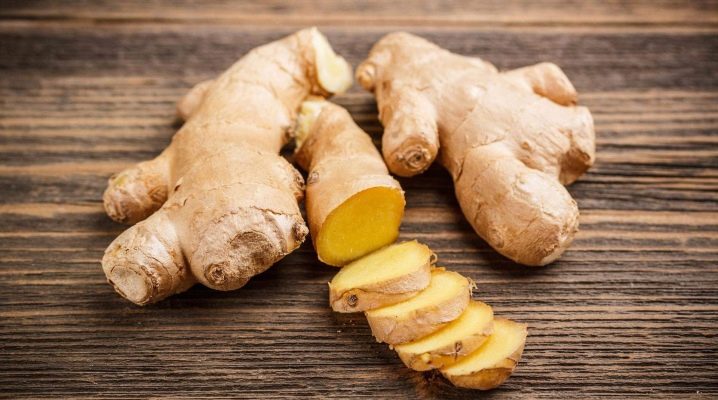
Ginger is renowned for its medicinal properties. However, not everyone knows that it can be grown at home. In this article, we will talk about the varieties of this plant, how to plant it, take care of it.
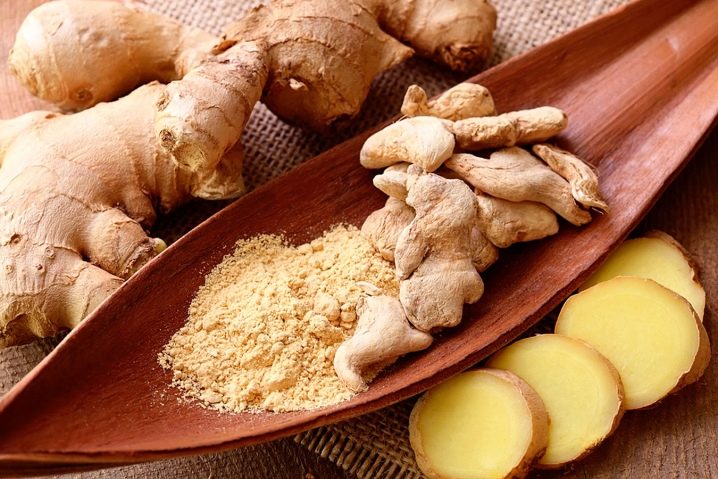
general description
Ginger is a plant that is also known under the names of pharmaceutical ginger, medicinal ginger, real ginger or common ginger. It belongs to the ginger family.
This plant comes from South Asian countries. At the present time, it is grown in China, Australia, West Africa. Moreover, you can grow ginger at home, and it doesn't matter, in Russia, in the Leningrad region, in the Kuban, in Belarus or somewhere in Siberia.
However, we note that the flowering of ginger is unlikely to be seen in central Russia. This can only be done if you can provide the plant with all the necessary conditions.

Speaking of ginger, it is worth mentioning how it looks. As a rule, many people are familiar with the root of this plant - it is considered very valuable, because it is used both in cooking and for medicinal purposes. The ginger root is usually curved and has a large number of branches. But not everyone knows what the ground part of ginger looks like. In appearance, it resembles sedge, reed or reed.
Note, however, that the cultivated plant is somewhat different from the one that grows in the wild.
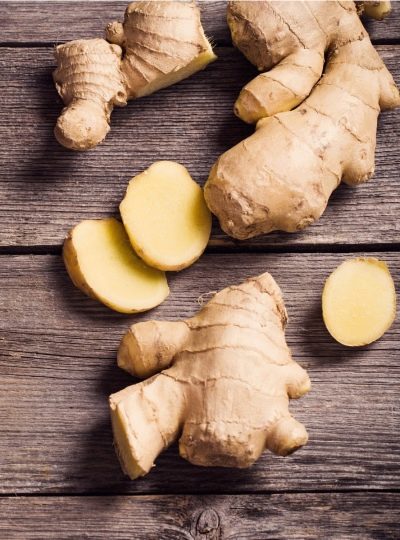
So, its leaves are narrow and elongated, their length can be up to 15 centimeters, and their width - up to 1 centimeter. The stem of this plant is straight and hollow, its height can reach about 1.5 meters, and its shoots with flowers can grow up to 30 centimeters.
But the ginger flowers themselves have a tubular shape and are located on short thick stems. Their shade largely depends on the variety: it can be lilac, scarlet or lemon. In addition, the flowers of ginger have a pleasant aroma. However, the flowering of decorative ginger will take a long time, you can see it only in the third year, and it blooms only under favorable conditions.
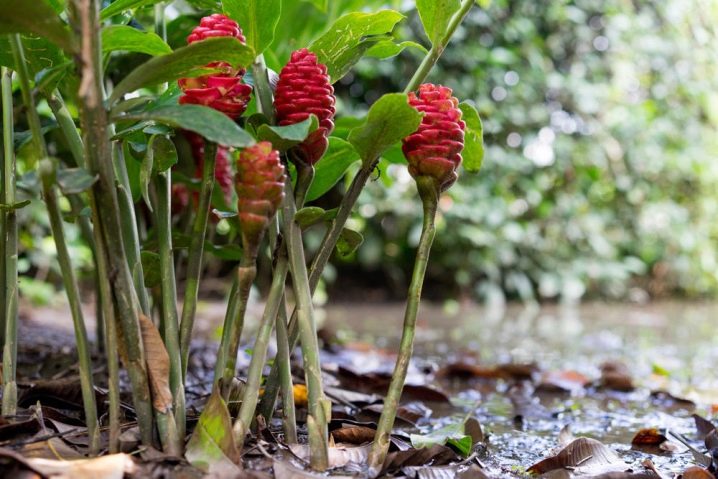
The root of ginger, which is the main one, is fibrous. Rhizomes grow from it, they are the most valuable for people: they are used both as a seasoning and as a medicine. Ginger root grows from 8 months to 2 years.
Types and varieties
There are many varieties of ginger. Consider those species and varieties that are most suitable for indoor growing.
So, many highlight black or barbados ginger. It is distinguished by its taste, namely: sharpness. As a rule, it is used unrefined.
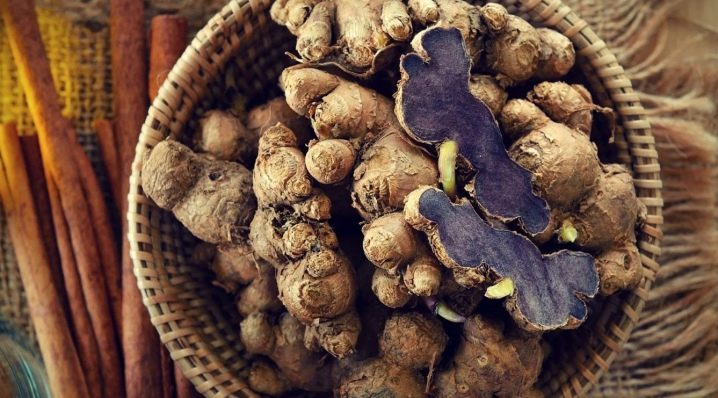
However, the most burning is considered indian ginger... It is great for making sauces, and its cost is usually not too high.
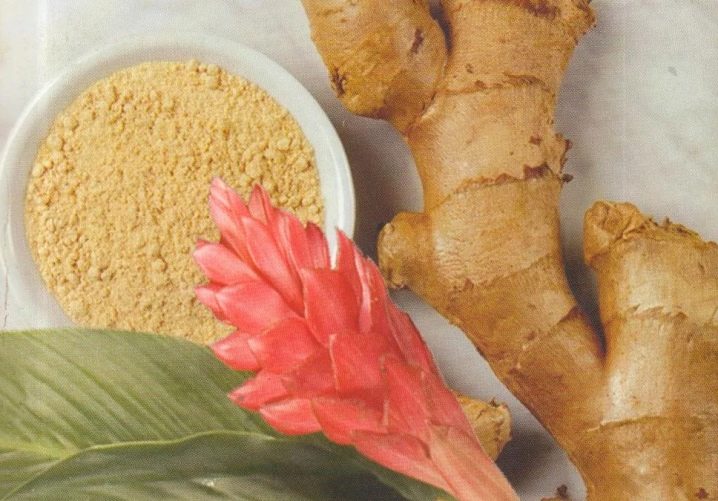
It is very burning and african ginger... It is distinguished by its pulp, which has a bright yellow color. This ginger is also nutritious, but you need to be careful when preparing dishes with it, due to its sharpness.
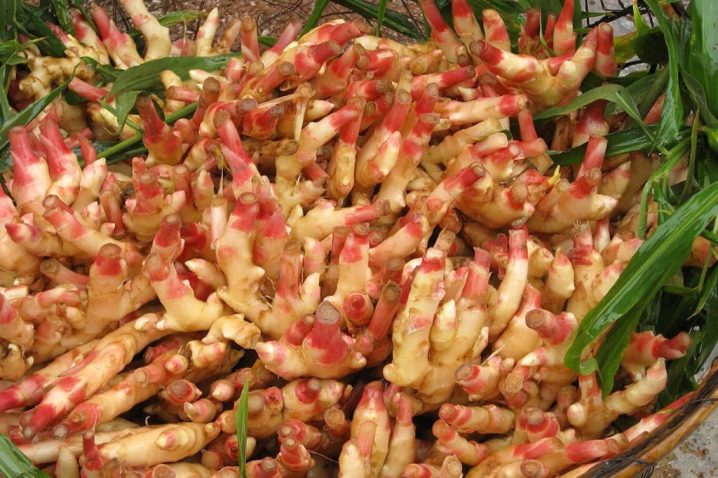
And here white ginger has a different taste. It is less pungent and more spicy. Before eating, it is recommended to bleach it using sulfuric acid.
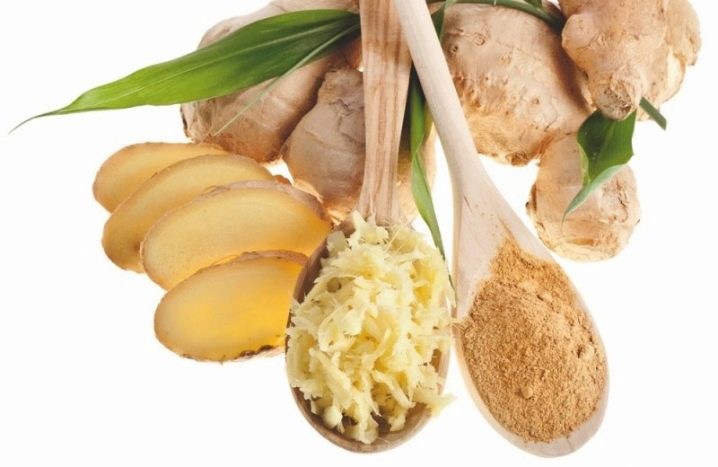
Landing
Preparation
In order for the ginger to sprout, it must be planted correctly, and for this it is necessary to prepare all the conditions necessary for the plant.
First of all, it is the climate.Ginger is very fond of heat, which is why many believe that growing it in the middle lane in the country in the open field is not possible. In this case, you can resort to the help of a winter garden or a heated greenhouse. However, you can also grow ginger in an ordinary pot.
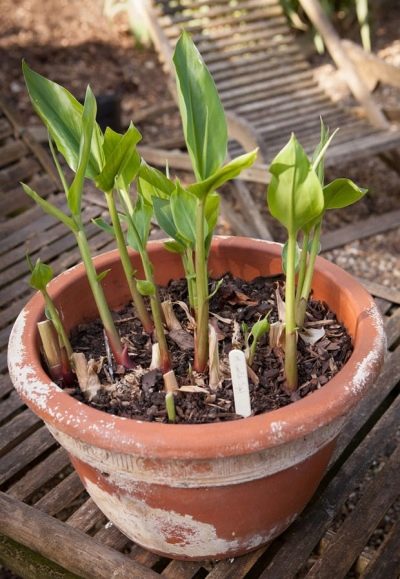
After that, it is worthwhile to start preparing the soil. In the wild, ginger tends to grow in drained soils, most of which are leaf humus and sand. It is such a soil that needs to be provided in the garden for planting ginger. Otherwise, the plant will not be able to grow fully and will need to be transplanted.
In addition, it is recommended to choose a well-lit place for planting, where the risk of water stagnation and drafts is minimal. Only under these conditions can you harvest a good ginger crop.
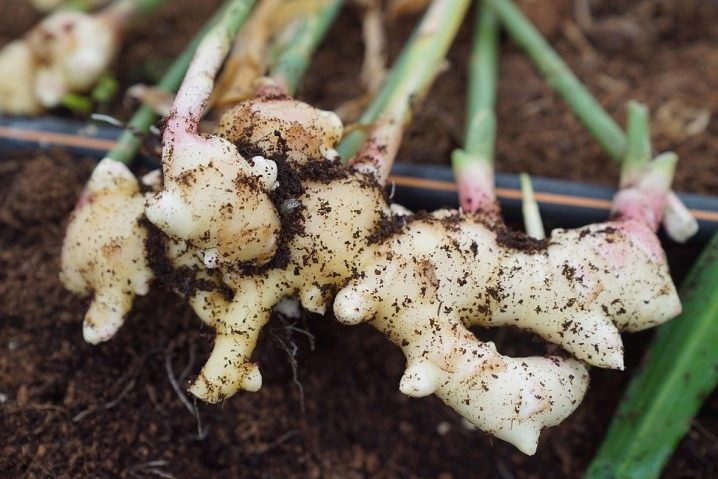
Technology
After preparing all the necessary conditions in the garden or in the house, it is required to prepare the ginger itself for planting, for this it is necessary to be guided by a certain technology... In general, it is simple.
To begin with, ginger roots are laid out on wet soil so that they are located buds up. After that, the pieces of rhizomes are gently pressed into the ground, and this must be done so that there are places above them for the emergence of shoots. Next, the seedling needs to be watered with warm water.
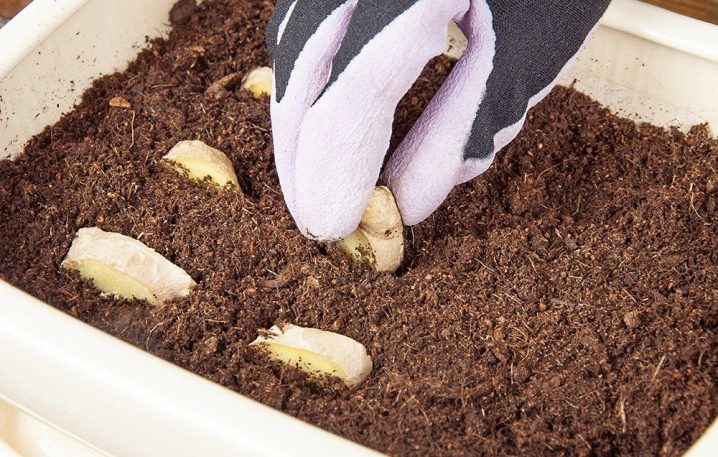
Separately, we note that it is not worth covering the rhizomes entirely with earth - this will enable the sprouts to hatch faster, and the seedling itself will not begin to rot.
Care
Care for ginger is also necessary carefully.
First of all, you should pay attention to watering. It is especially important during the growing season - at this time, the plant needs an abundant amount of moisture. Moreover, the water you pour over the ginger should be soft. You can make it like this by filtering or settling. Watering the plant is necessary in the morning after the topsoil is completely dry.
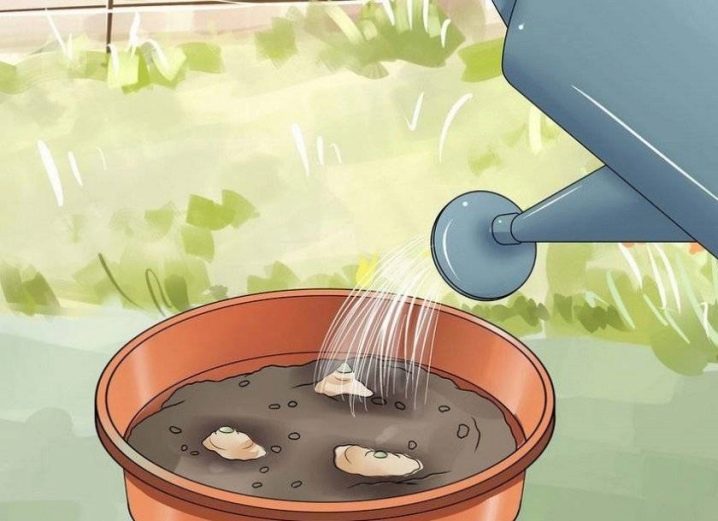
During the winter, the abundance of watering should be reduced. It will be enough to add water every two weeks. Otherwise, rot may occur. However, complete drying out of the soil should not be allowed.
Do not forget about the need to loosen the soil.... This should be done after watering. Moreover, you need to act carefully so as not to harm the ginger roots: most of them are located at a depth of two centimeters.
But you should not ignore the need for loosening. This can lead to a lack of oxygen, which in turn will lead the plant to inhibition in development.
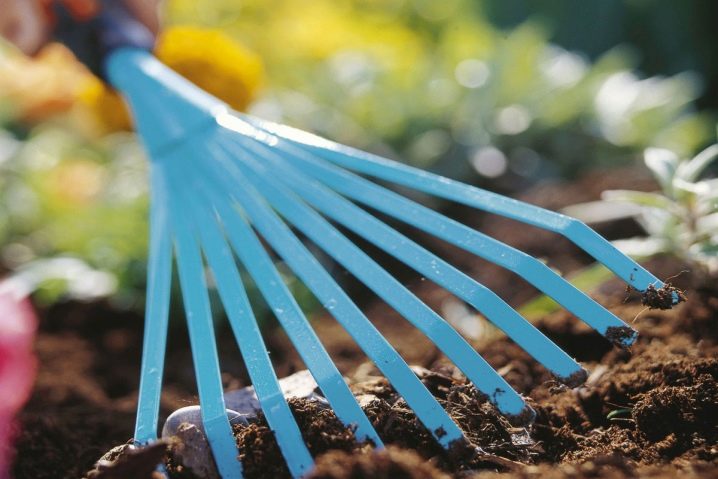
Do not forget about feeding.... In general, they do not need to be brought in, but in this case, you will not have to wait for a rich harvest. If you still want a good harvest, then special attention should be paid to fertilizing during active growth and development. During this period, it is recommended to introduce organic matter and mineral fertilizing. When seedlings appear, it is worth switching to nitrogen fertilizers, which contribute to the development and growth of green mass. After that, you will need to use fertilizers with a high content of phosphorus and potassium, which will help in the development and formation of the tuberous part.
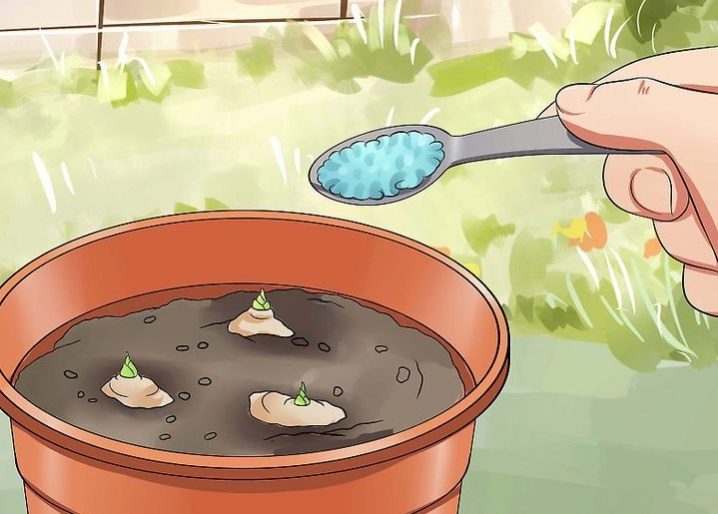
Reproduction
Cultural ginger can only be propagated vegetatively; this can be done by dividing the rhizome into tubers in the spring before planting. The root from which you plan to breed ginger must have eyes - it is from them that shoots will form in the future. This root needs to be cut so that on each part there are several points for growth. Places of cuts are required to be sprinkled with crushed coal or ash from deciduous trees.

However, such a root should not be planted in open ground immediately. To begin with, it is recommended to place it in a greenhouse environment. They do this at the end of March, or at the beginning of April.In order for the growing season to go well, the plant needs a temperature of at least +25 degrees, as well as spraying the soil with water. But a decrease in temperature to +18 degrees and below should not be allowed. Otherwise, ginger will inhibit growth, and it will be quite difficult to fix it.

Diseases and pests
Ginger, unlike other cultivated plants, is practically is not affected by various diseases. However, it can turn yellow or dry, which, as a rule, is caused by mistakes that were made in the care. In this case, it will be enough to correct these errors by adjusting agricultural techniques, which will correct the situation.
But the parasites infect ginger, and often. At home, the spider mite is very active, due to which cobwebs and dry areas appear on the foliage of the plant. At the same time, ginger begins to weaken and lag behind in growth. The fight against this parasite must be carried out in a comprehensive manner, processing all the plantings present in the house. For this, it is recommended to resort to drugs such as "Kleschevit", "Fitoverm" or "Tiovit-Jet" - they are considered the most effective.

Harvesting
In regions that are characterized by year-round warmth, ginger begins to be harvested when its foliage turns yellow, begins to wither and dry, and its root gains a sufficient amount of strength and is fully formed. Such rhizomes have a bright and pungent taste.
However, it is allowed to dig up young roots.... Their taste is usually softer and more delicate. This is usually done in Thailand from November to March, but this is not relevant for the conditions of our country. Here, as a rule, rhizomes begin to be dug out at a time when the plant cannot develop fully, due to weather conditions.
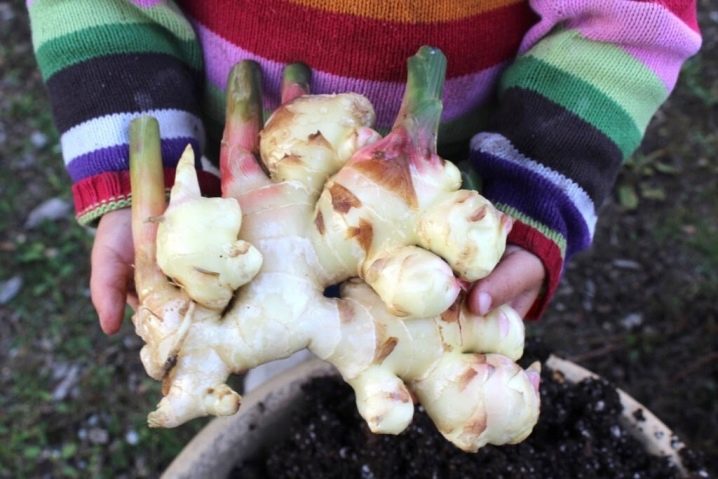













The comment was sent successfully.